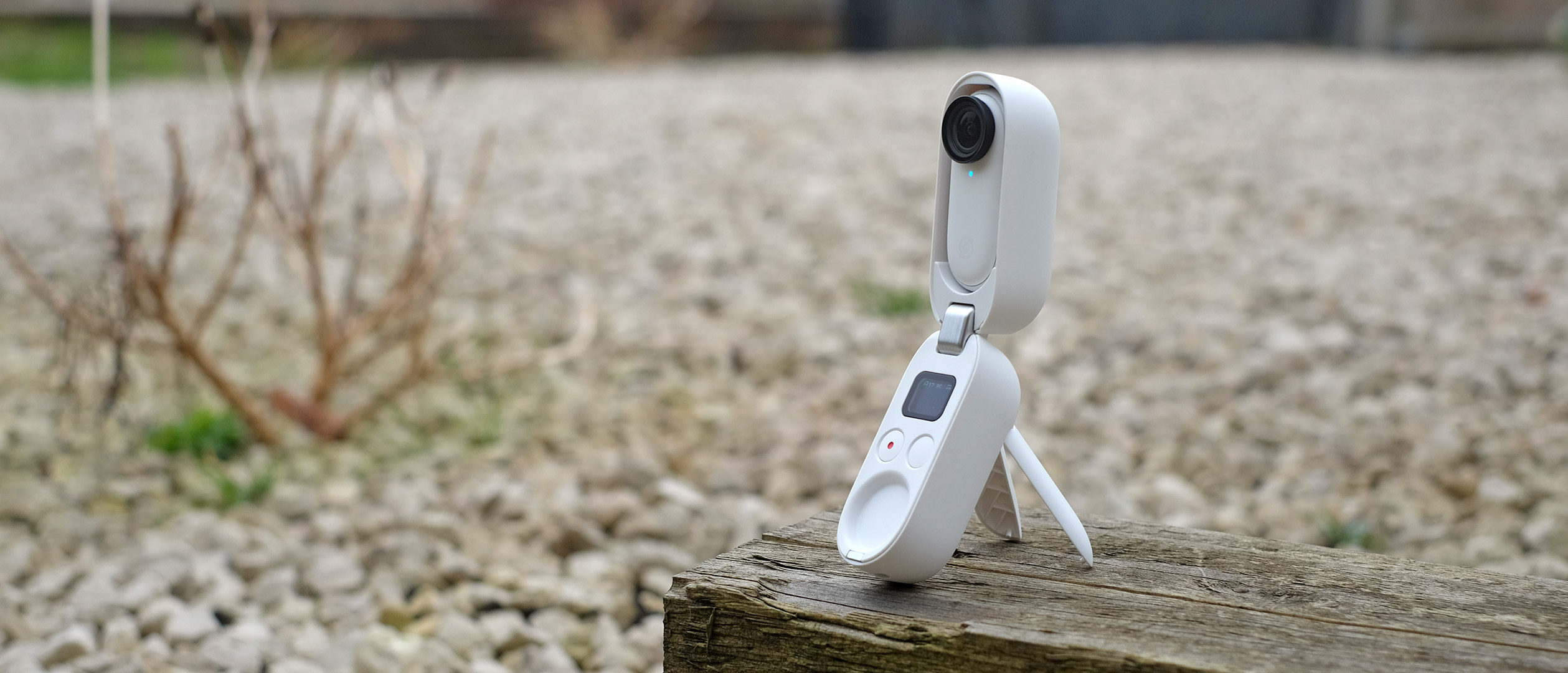TechRadar Verdict
Insta360’s second micro-size Go camera offers improved image quality and a clever remote control charging case. This makes it much more useful than its predecessor for shooting video beyond 30-second throwaway clips. It’s not for everyone, but the Insta360 Go 2 is perfect for vlogs or as a second action camera that you can take virtually everywhere.
Pros
- +
Much-improved image quality over predecessor
- +
Handy protective charger case with built-in tripod
- +
Case also acts as a wireless remote
Cons
- -
In-camera stabilisation not at GoPro level
- -
No screen for scene composition
Why you can trust TechRadar
Two-minute review
The Insta360 Go 2 is a tiny camera that you can mount to almost anything, and yet still manages to capture high-quality stabilized video.
This successor to the Insta360 Go has all the benefits of the original, irons out some of the compromises and adds a stack of important features.
Most of these new Insta360 Go 2 features revolve around the case. The first Insta360 Go’s case was just for charging and plugging into an iPhone.
This second-generation one is a completely different affair. It has buttons, a mini mode screen, it flips open to become a holder for the camera. And it even has built-in legs, turning it into a tripod. What the Insta360 Go 2 lacks in innovation around its form factor, it makes up for with smart additions and drastic usability improvements.
Sure, it tops out at 1440p resolution, but this needn’t be a deal-breaker as its image quality impresses. It’s a leveling-up over the original, and can capture detail similar to a GoPro Hero 9 Black in many situations.
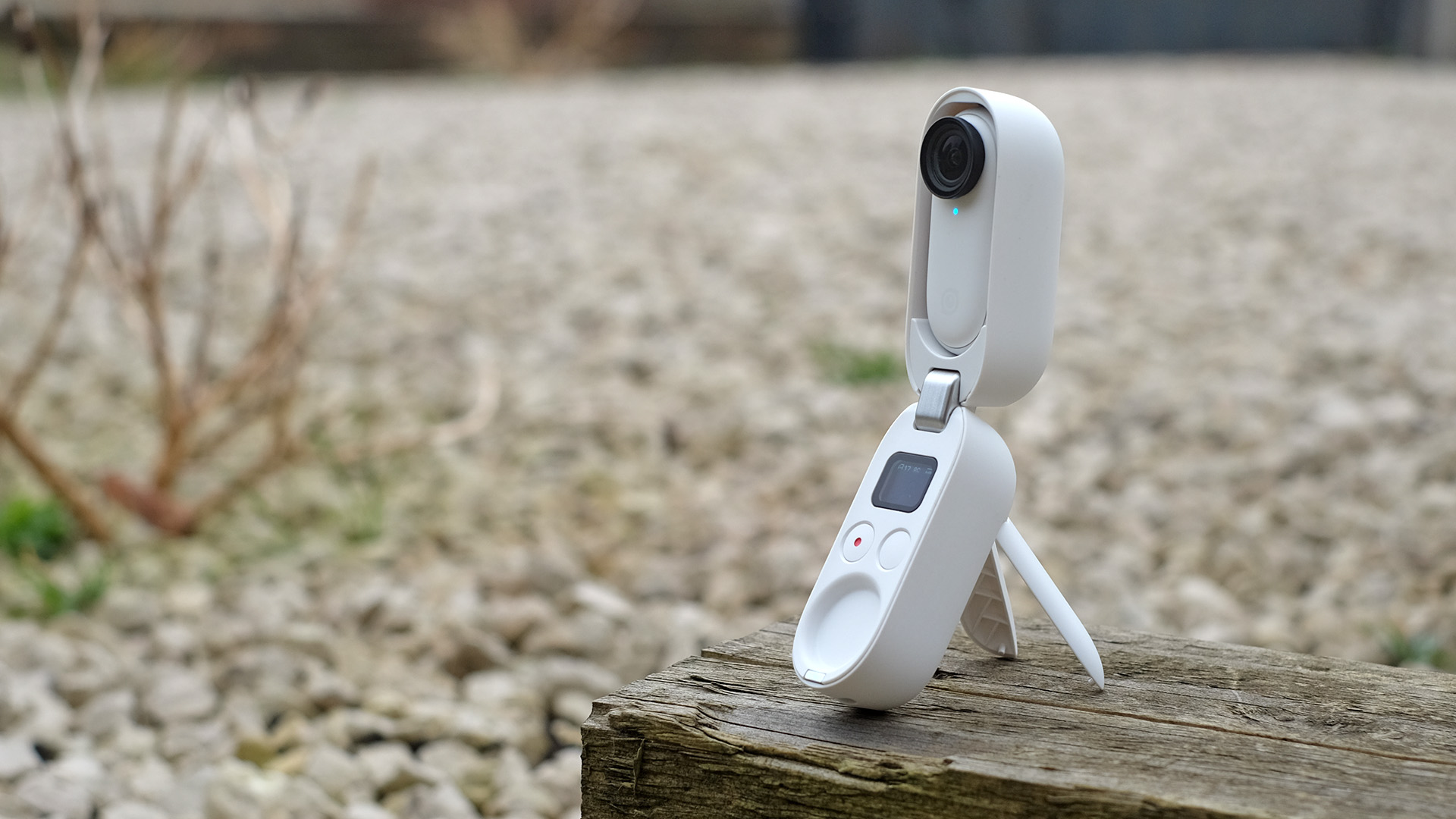
Is it the perfect micro action camera? No. The lack of a preview display is a big issue for a non-360 camera, and while the workflow is improved over some earlier Insta360 cams, it is still not as quick-to-use as a GoPro.
However, the Insta360 Go 2 is a case study in what a second-generation product should be. It takes what made the original special, and improves upon it in almost every conceivable way. Carry on reading for a deeper look at modes, image quality and features, and one thing we’d like to see in an Insta360 Go 3.
Insta360 Go 2 price and release date
The Insta360 Go 2 was announced in March 2021, 18 months after the original Go.
It is significantly more expensive than its predecessor, though. The Insta360 Go 2 costs $299 /£294.99 / $479.99AUD, up from $200 for the original.
This pushes it uncomfortably close to the cost of the GoPro Hero 8 Black. And if the micro-size design of the Insta360 Go 2 isn’t essential, a more traditional camera like that may be a better buy for you.
However, the Insta360 Go 2’s improvements in image quality and usability arguably justify the added cost.
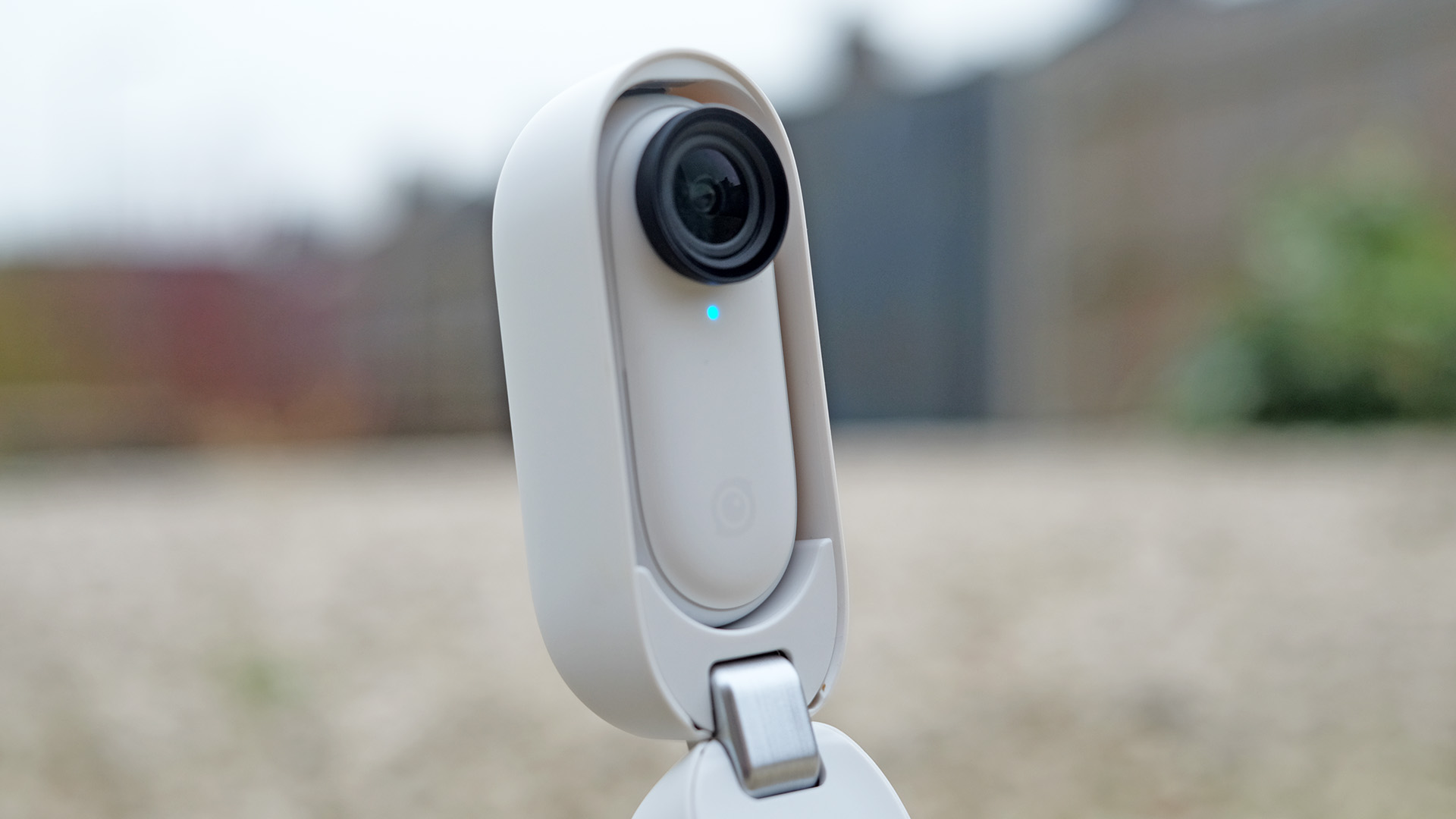
Design
Let’s start with a primer on how the Insta360 Go 2 operates. We’re going to assume you have no knowledge of the original Insta360 Go here.
The Insta360 Go 2 is a tiny action camera, of a shape and size not dissimilar to a classic USB stick. This lozenge contains all of its core electronics. There’s a lens, a sensor, a battery, the processor, 32GB storage and a hidden shutter button on the front so you can operate the camera solo.
You get three mounts in the box. The pendant is a necklace with a magnetised plate that holds the Insta360 Go 2 in place. Wear this pendant under a shirt and the camera sticks there, as if stitched into the fabric.
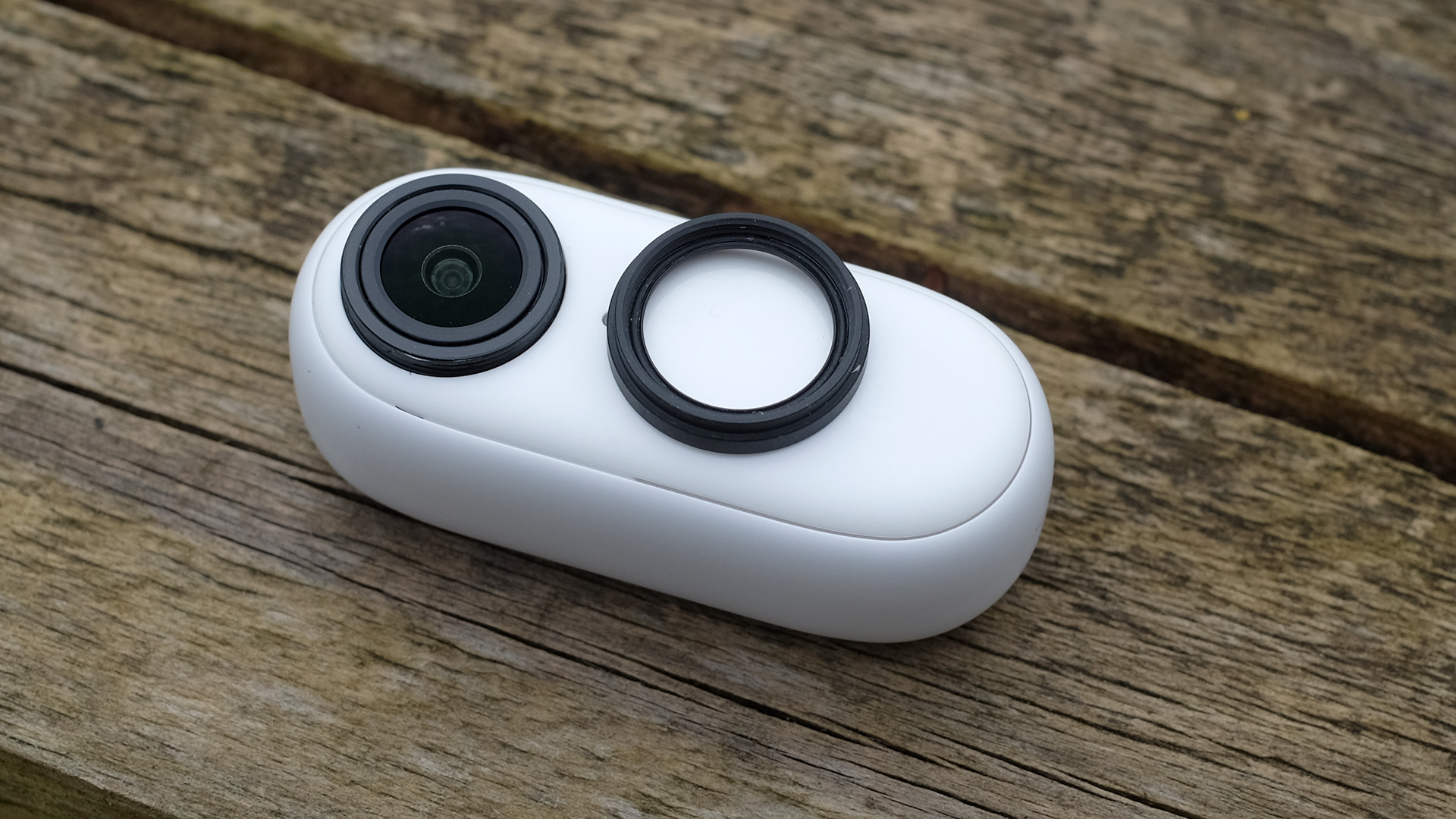
The Easy Clip has a gripper that can be attached to caps or backpack straps. And the Pivot Stand has an adhesive back that can be stuck to whatever you like.
There’s no bike mount, but you get the sense the Insta360 Go 2 is made for situations where a standard action camera might be too big or too conspicuous. And you can get a universal mount adapter that will play nice with generic or GoPro mount accessories.
Perhaps we’re video dinosaurs but we also think not having a screen is still the primary reason not to buy the Insta360 Go 2. You can’t compose your image and, unlike a good 360-degree camera, your ability to fix things in ‘post’ is limited.
This isn’t a dig at Insta360. It makes plenty of action cameras with screens. But you should have a good think about this issue before buying an Insta360 Go 2. You just don’t feel like that much of a videographer when using this camera unless you use the app for a wireless preview display. That works well enough, but isn’t as good as having a GoPro-style screen on the camera.
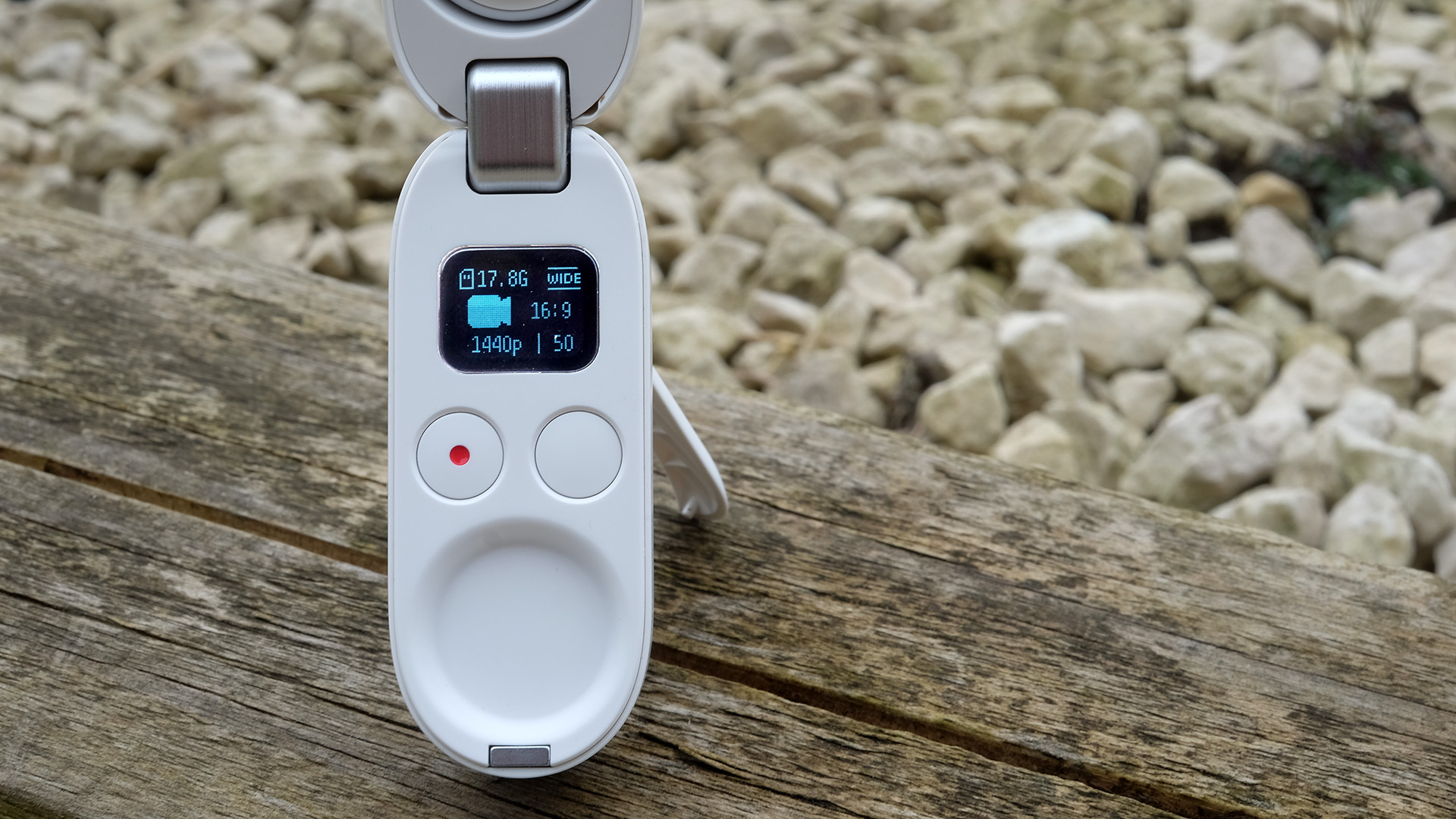
We also wish the clamshell hinge of the battery case could swivel. Its orientation is perfect for vlogs, putting your finger over the shutter button. But if you want to use it like a tiny Super8 camera, which we did a lot, the screen and buttons face away from you.
Still, one big positive is the Insta360 Go 2’s removable lens covering. We love this change. The lens cap screws off, just like a classic GoPro, letting you replace it if it gets scratched.
Given the camera itself is more-or-less protected when in the case, the Insta360 Go 2 is one of the easiest action cameras to keep in good nick. Even if you don’t treat it very well.
It is also water resistant to IPx8, able to handle submersion in water. However, this water proofing is not good enough for swimming, the motion of which increases pressure, requiring a higher-grade seal.
Accessories: the new battery case
We’ve mostly used the Insta360 Go 2 with its battery case. You slot the camera into this to export your clips or to recharge the battery, but it is also home to two buttons and a tiny-but-clear OLED display.
This combo of screen and physical buttons lets you switch between modes, alter settings and start/stop taking videos and stills. It turns the Go 2 from a casual action camera for quick occasional clips, to something much closer to a fully-fledged one.
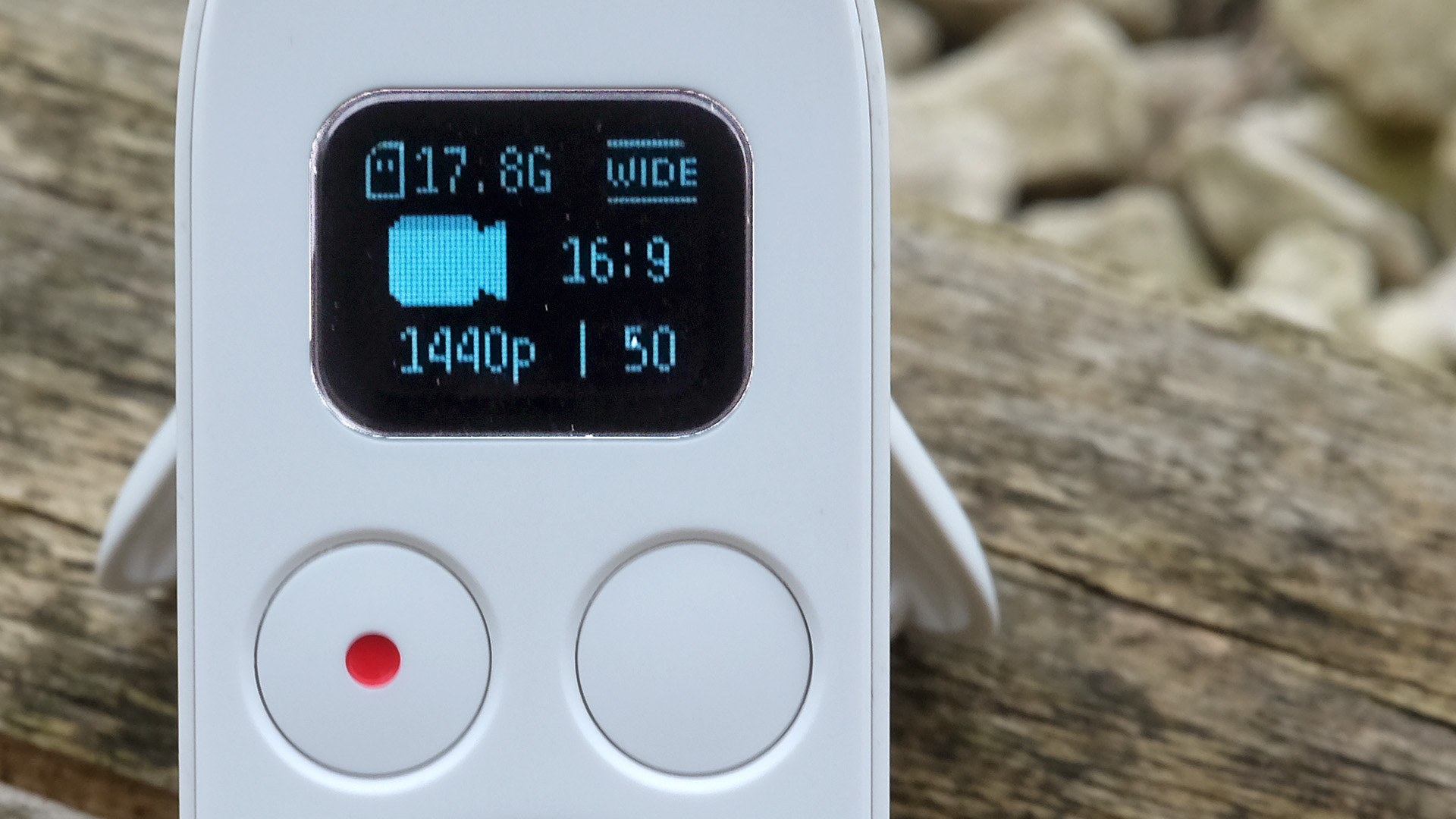
The case connects to the camera wirelessly, too. You could, for example, leave the Insta360 Go 2 attached to a baseball cap and keep the case in your pocket, ready to act as a remote control when you want to capture some footage.
On one day of shooting we kept the camera locked into the case the whole time, though, because the flip-out base also acts as a mini stick grip. It keeps your hand out of view and makes taking casual clips blissfully easy.
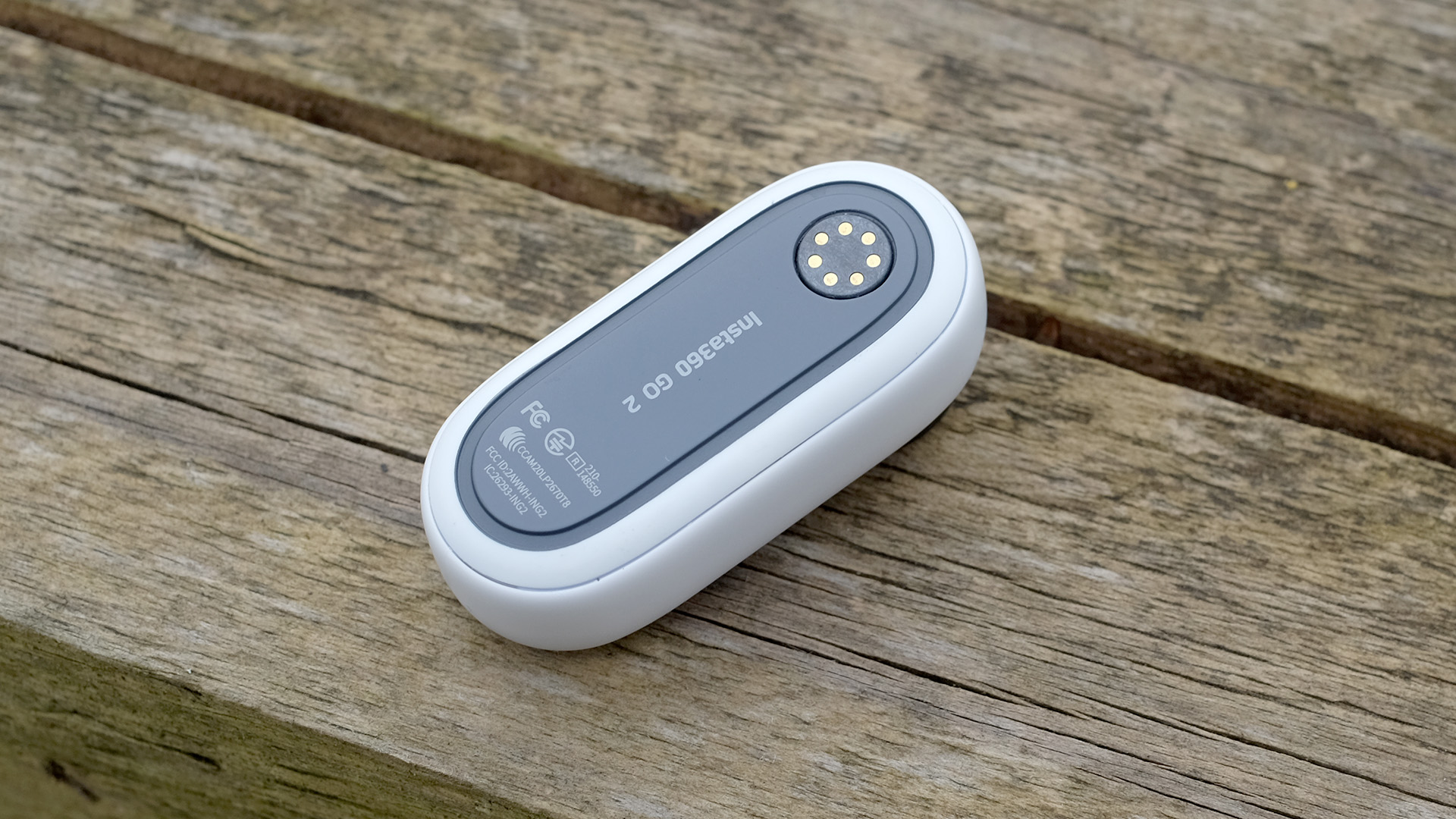
All of this is a big part of what we missed in the original Insta360 Go. While you can access a whole bunch of the shooting modes when the camera flies solo, it involves learning which multi-tap gesture fires-off which mode. And who has time for that?
The Insta360 Go 2 case also has cute flip-out legs, perfect for impromptu group stills shots and for time-lapse videos. There’s a standard thread mount on the bottom too, should you want to use a ‘proper’ tripod. The tiny integrated legs only work on a mostly flat surface, so that flexibility is welcome.
This case fixes most of the fundamental issues that narrowed the appeal of the original Go.
Image quality
There is also a huge improvement in image quality over the original Insta360 Go, too.
One spot we tend to return to when assessing action cameras is an area in a nearby park where the light level is reduced a little by a canopy of trees. In the original Insta360 Go, this drop in light caused the image to turn to mush.
The Insta360 Go 2 manages to retain most of the detail it captures when in bright sunlight, for the sort of performance we’d expect from a GoPro Black-series camera, not a tiny one like this.
This lift in image quality isn’t restricted to mid-level light either. Shooting into a bright sky, the Insta360 Go 2 displays dynamic range similar to a high-end, standard-size action camera.
There will still be overexposed areas in some clouds, often great big ones, but these are limited to those areas of cloud. And blue areas in skies are generally well-resolved, rather than appearing a blue-to-white gradient, as they can appear to a camera with a low dynamic range sensor.
The Insta360 Go 2’s image quality is better than we expected, although is arguably only in-line with the increased cost.
Insta360 also seems to have leveled-up its processing. In most Insta360 camera reviews we’ve written to date, ‘pixel fizz’ has been mentioned – even the Insta360 One R 1-inch Edition. This is where tight-knit fine detail phases in and out of existence as the processing vacillates between deciding it is detail and noise.
There’s remarkably little of this in the Insta360 Go 2, considering the camera’s small size and small sensor. It increases with fast motion when using the Pro mode (more one that later), but we’re talking about image quality more like the Insta360 One R, than the original Insta360 Go.
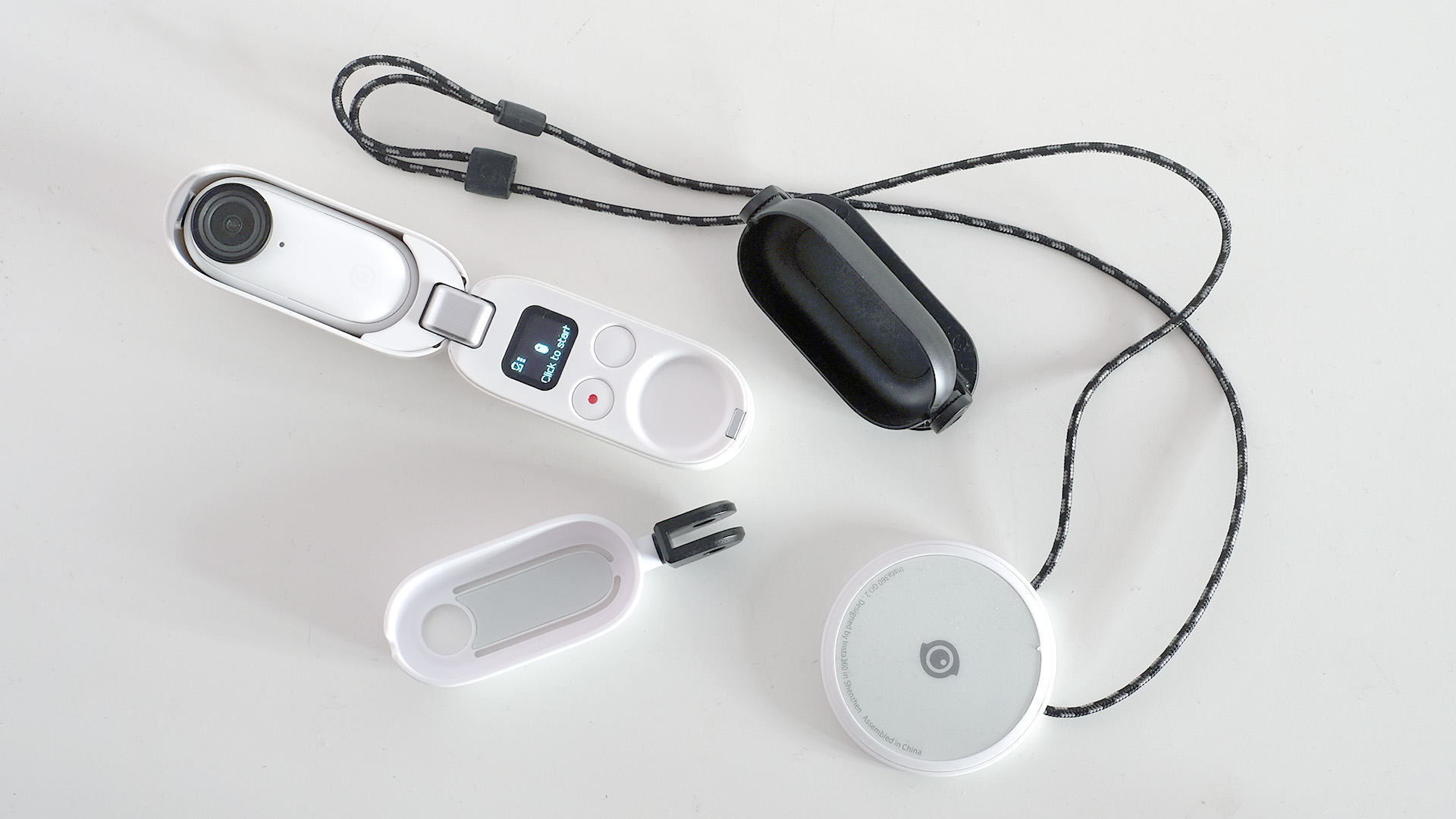
It even has significantly clearer night-time video than the GoPro Hero 9 Black. And while you can increase the GoPro’s brightness by raising the maximum ISO sensitivity, Hero 9 Black videos look like trash at ISO 6400 (the top setting).
The GoPro is still the clear winner in terms of color tone, stabilization and general image consistency. But that we can talk about them in such close proximity is a big win for the Insta360 Go 2.
The Insta360 Go 2 cannot shoot 4K video either, but does it matter? Probably not, for many use cases.
Analyzing the footage of this camera and the GoPro Hero 9 Black side-by-side at pixel level, the amount of fine detail they capture at the centre of the frame is actually quite similar. The difference is often more about aliasing rather than a major difference in actual image information.
The Insta360 Go 2 shoots 1440p sharper than the 4K of most cheap action cameras you might find on Amazon. Hats off to Insta360 for not simply performing a cheap upscale job and calling this a 4K camera.
The difference is a little more noticeable when you use the Insta360 Go 2’s more cropped field of view. There are three primary view options: ultra-wide, linear and narrow.
Ultra-wide is the default, using the entire sensor minus the rind used for stabilization. Linear attempts to remove the geometric distortion of the wide-angle lens, but results in much softer footage at the corners of the frame as parts of it are effectively stretched.
Narrow is a classic crop that gets rid of the wide angle action cam sensibility. But it also appears less sharp all-round as it’s a digital crop.
Insta360 doesn’t talk about the actual resolution of the sensor, but the raw stills files it captures are 3040 x 3040 pixels, or 9.2MP.
Modes and usability
The Insta360 Go 2 also has a fairly comprehensive selection of modes. The full list includes Video, Photo, Pro Video, HDR video, TimeShift, Timelapse and Slo-mo.
TimeShift speeds up the action, but by 4x rather than the greater time compression of Timelapse. That mode lets you capture a frame between every 0.5 seconds and every 120 seconds.
The difference between Video, Pro Video and HDR Video are what you really need to know about. Standard ‘Video’ does the job for casual shooting where you want to keep things simple. It uses in-camera stabilization and doesn’t let you change the field of view when you export clips, streamlining the process of getting videos from camera to laptop or phone.
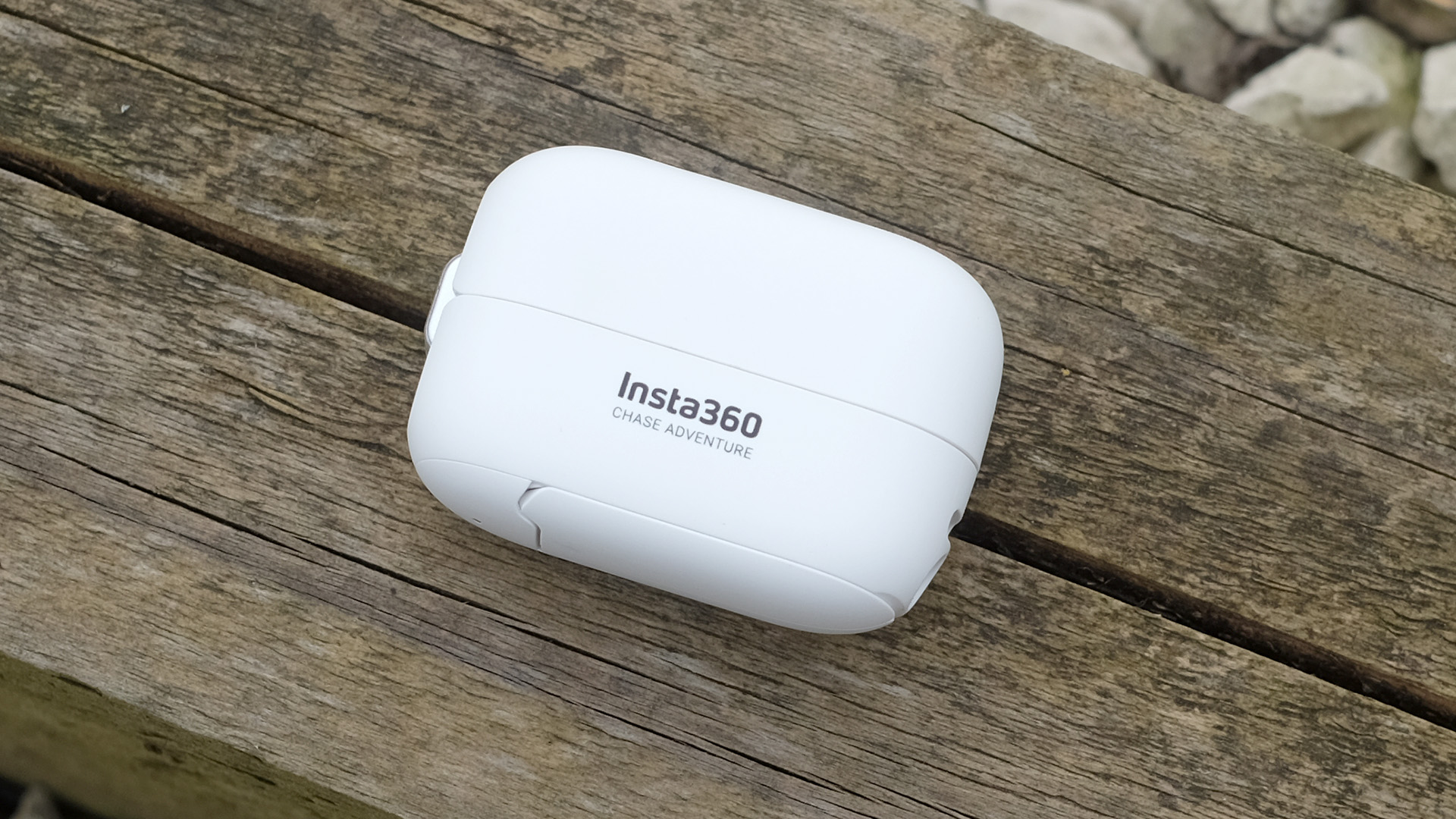
Plug it into a Mac or PC and the MP4s show up as if they are on a USB stick using the default mode.
Pro Video, meanwhile, allows for field of view alterations during export, horizon levelling and FlowState stabilization.
In this mode the whole field of view is sent to the Insta360 app on your phone, and it smoothes out motion using Insta360’s FlowState stabilization. If you want to capture actual action, while you run or ride, use Pro Video.
The tertiary HDR Video mode largely fixes the overexposure issues mentioned earlier, but also introduces problems where, for example, branches appear to disconnect from the trees they are attached to as you pan. It’s best used when you’re standing still. Think twice for motion, especially as the 24fps frame rate won’t look smooth to eyes accustomed to 60fps.
This summary says you should probably use Pro Video most of the time, right? However, that also means you have to pass your videos through either the Insta360 app on your phone, or Insta360 Studio on your laptop or desktop.
Pro mode video files are visible when you hook up the Insta360 Go 2 to a laptop, but they look as though they have been shot through a porthole because they record the entire sensor view.
Stabilization: FlowState vs Hypersmooth
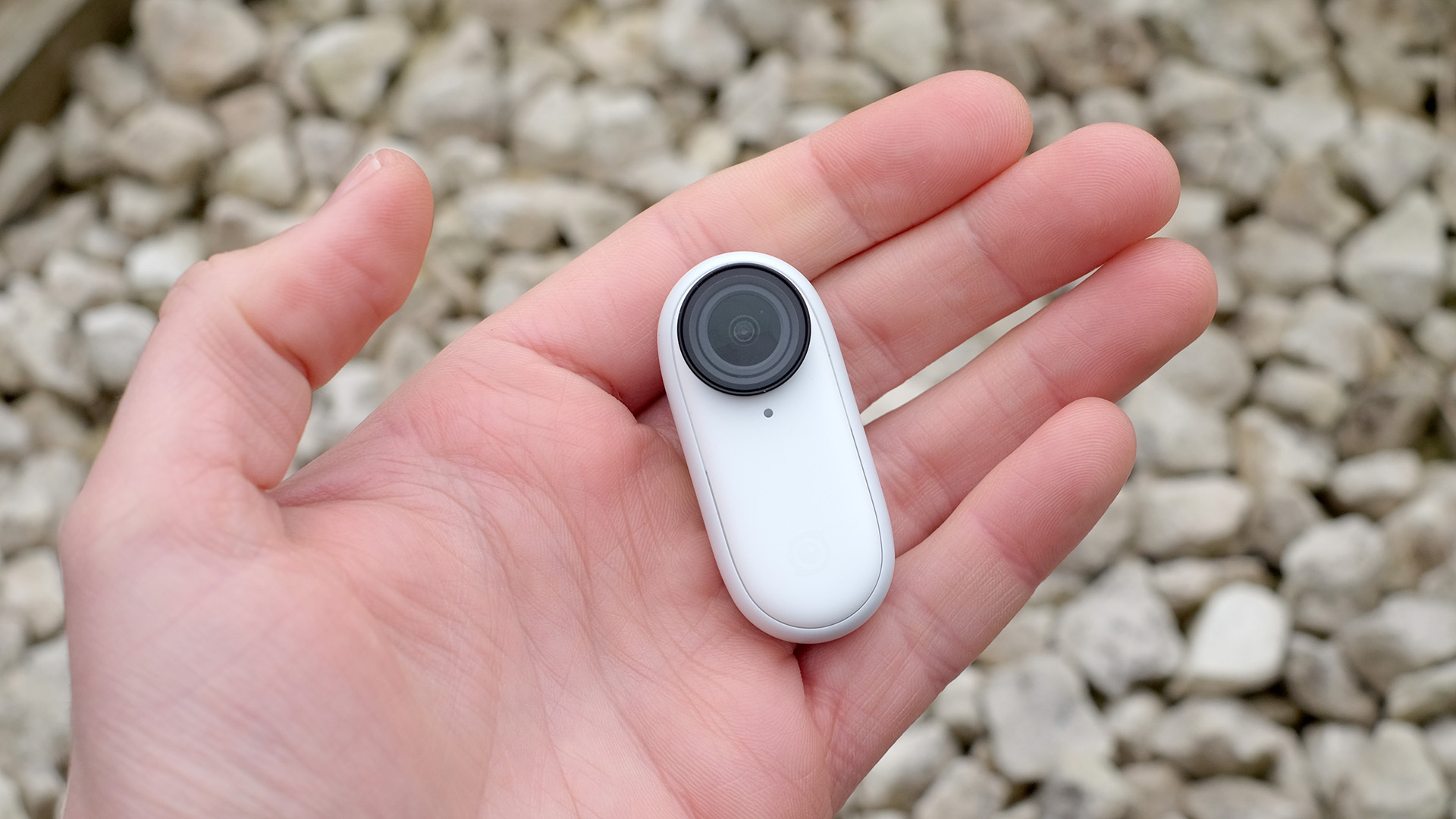
Insta360 was one of the first companies to come up with a truly convincing alternative to GoPro’s much-lauded HyperSmooth stabilization. It’s called FlowState, but is it really as good?
The Insta360 Go 2’s in-camera stabilization is not remotely close to GoPro’s. It can mitigate walking speed motion reasonably well, but you don’t get the steadicam effect of HyperSmooth and footage shot during a run was still jerky.
The situation improves dramatically if you let your phone/laptop do the work, using Insta360’s app to process FlowState stabilization. This offers horizon leveling, particularly important in a camera that doesn’t have a preview screen, and excellent motion smoothing.
However, it’s also here that we see some of the clearest image quality compromises we’ve seen in previous Insta360 cameras. Fast motion in even slightly imperfect lighting can introduce artifacting in areas close to blocks of color, and shimmering detail.
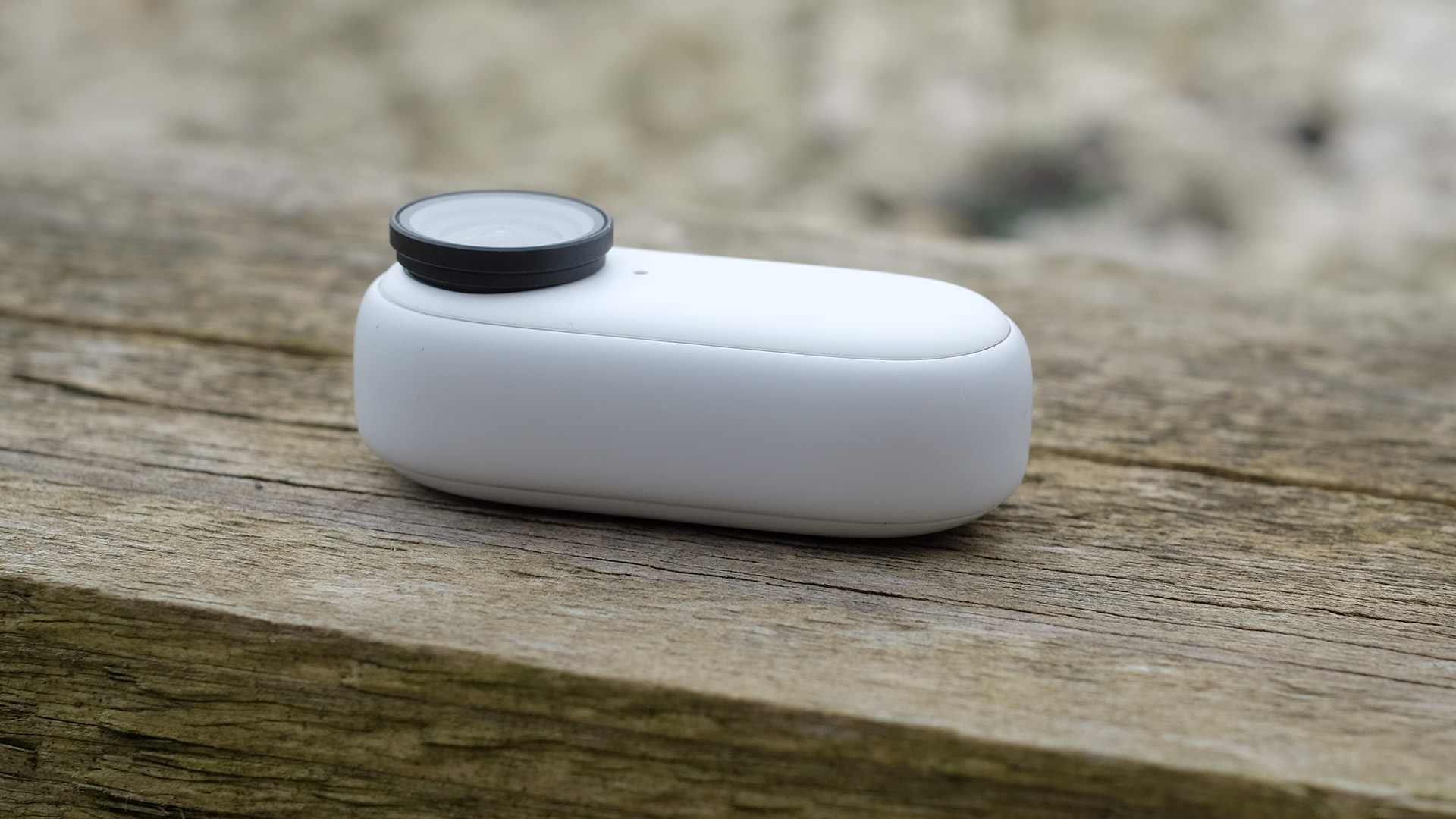
We had thought this was particular to the Pro Video mode. But looking frame-by-frame at the less well-stabilized standard default ‘Video’ mode clips, there’s some of this effect there, too. You just don’t notice the issues so much when the action is wobbling all over the shop.
In summary, FlowState is great, but how GoPro handles motion is still significantly better. This isn’t just down to GoPro’s software. Its cameras also have a wider native field of view, giving them more of an image buffer for the electronic stabilization to do its thing.
Audio quality
The Insta360 Go 2 has just one microphone. It sits on the top, and there’s a cut-out for it in the battery/tripod case.
Our first tests were not too positive. A single mic gives a limited sense of environmental sound, of the positioning of objects, animals or people. There’s a mild hissy noise bed, and wind noise is an issue only partially mitigated using the wind noise reduction mode.
But after returning home to try some voice tests we were pleasantly surprised. The single mic renders vocals with a decent amount of bass, the mids are represented and treble is clear.
We are miles away from some of the car crash audio performances we heard in our best cheap action camera group tests.
Battery life
Just like the original Insta360 Go, the Insta360 Go 2 doesn’t last too long off a charge by itself. It’s rated for 30 minutes of capture, or a much better 150 minutes with the case connected and fully charged.
There’s no hot-swapping of batteries here. And we found, anecdotally, that the kind of on-off quick clips you’ll probably take with the Insta360 Go 2 won’t see you quite reach those published 30/150 minute numbers.
But given how appealing using the Go 2 with the case is, it effectively reaches the action camera norm. No major complaints here.
Should I buy the Insta360 Go 2?
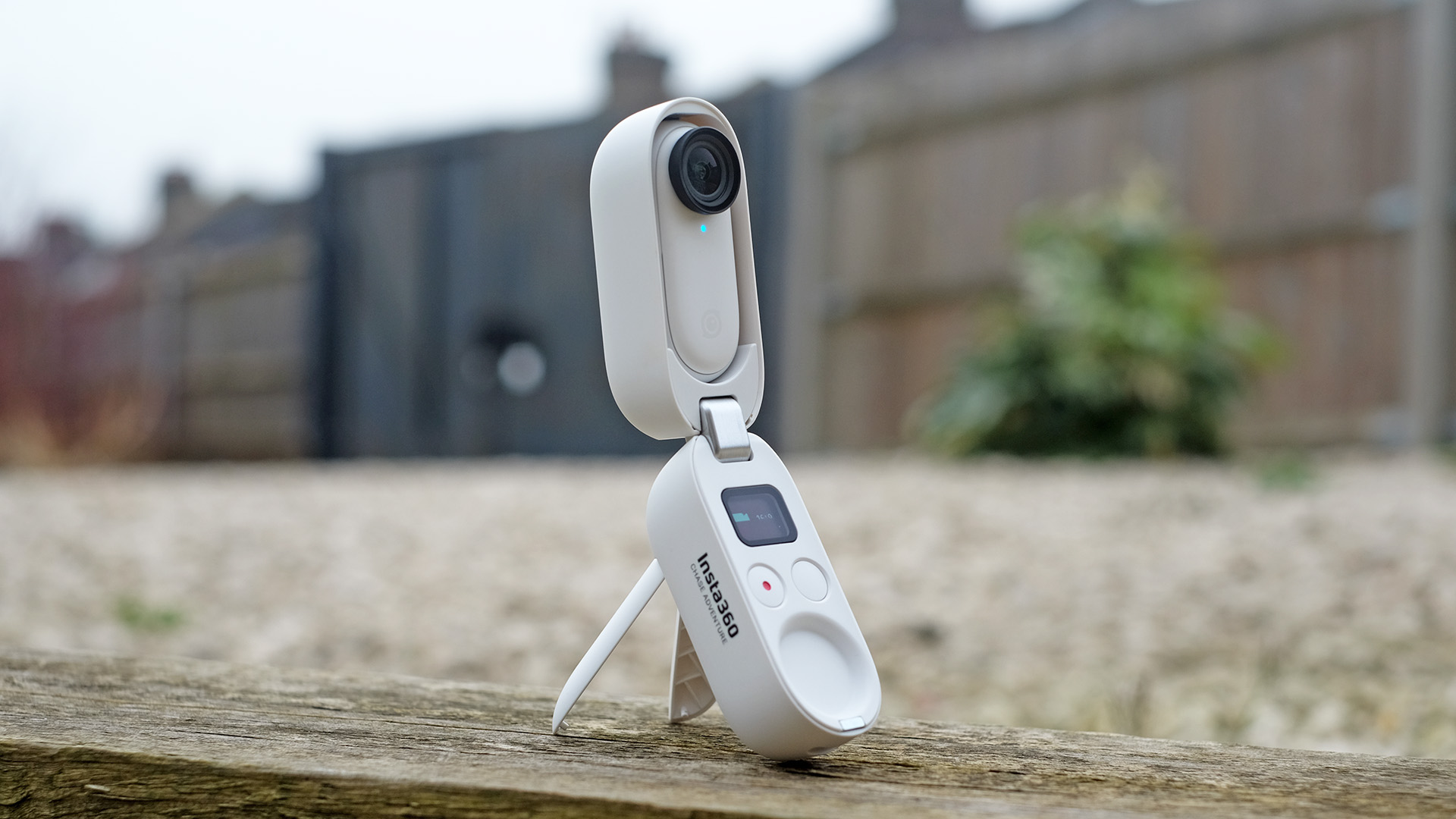
Buy it if...
You want good image quality in a tiny camera
If you bought or tried the original Insta360 Go and were disappointed by its image quality, the Insta360 Go 2 is the step up you need. It provides results much closer to those of the Insta360 One R and GoPro Hero 9 Black, even if its maximum capture resolution is only 1440p. Video quality is impressive for the tiny size.
You want a (mostly) inconspicuous action cam
The Insta360 Go 2 may not be a spy cam, but its small size and multitude of mounting options make it a great fit for situations where a full-size action camera seems a bit… much. You could call it an Instagrammer’s action camera, but we also love that you can shove it in a pocket without worrying about damaging the screen.
You want a GoPro you can take literally everywhere
Many may wonder who the Insta360 Go 2 is for. And, sure, the majority of potential action camera owners should probably buy a more traditional design instead. However, this little thing’s case is no bigger than that of some true wireless earphones. It fits comfortably in a normal pocket. The GoPro Hero 8 Black is only slightly larger, but putting one of those in a pocket that isn’t completely empty feels tantamount to abuse.
Don't buy it if...
You want to actively compose your shots
The Insta360 Go 2’s screen is a simple monochrome display. To actually see what you’re shooting before you capture it you need to use the phone app, which can act as a wireless display. This doesn’t offer the seamless feel of a built-in screen. And it’s quite easy to shoot lop-sided footage without the preview when using the default video mode.
You want 4K video
The Insta360 Go 2’s maximum capture resolution is 1440p, a step below 4K. While we’re quite impressed by how close real detail capture gets to a decent 4K action cam, but it gives you less scope for cropping.
You want the fastest workflow
While Insta360 Go 2 can be plugged directly into a laptop, at which point its videos show up as if stored on a disk drive, for the best stabilization you still have to pass the clips through Insta360’s software. Its top FlowState stabilization doesn’t happen in-camera, but in the phone app or the Insta360 Studio app on your computer.
Andrew is a freelance journalist and has been writing and editing for some of the UK's top tech and lifestyle publications including TrustedReviews, Stuff, T3, TechRadar, Lifehacker and others.
